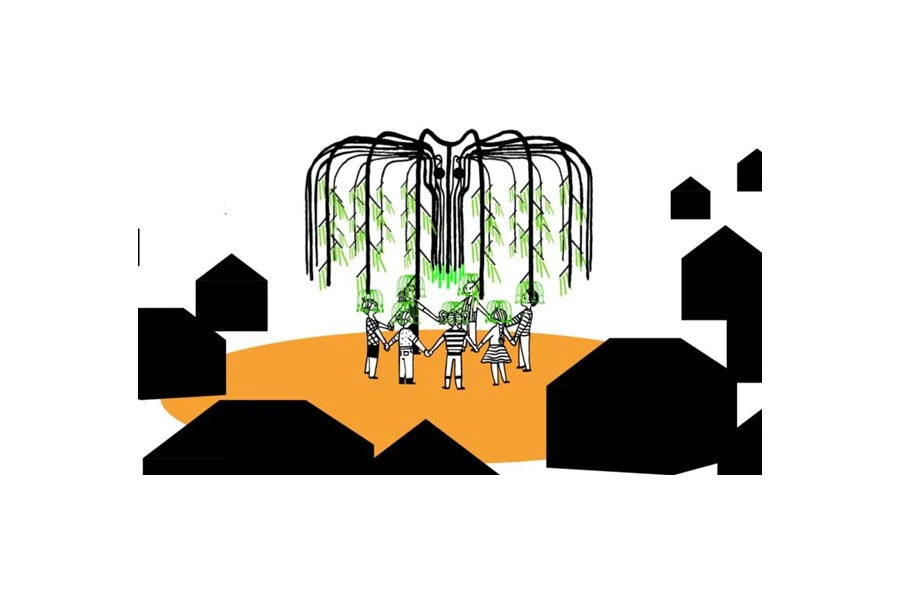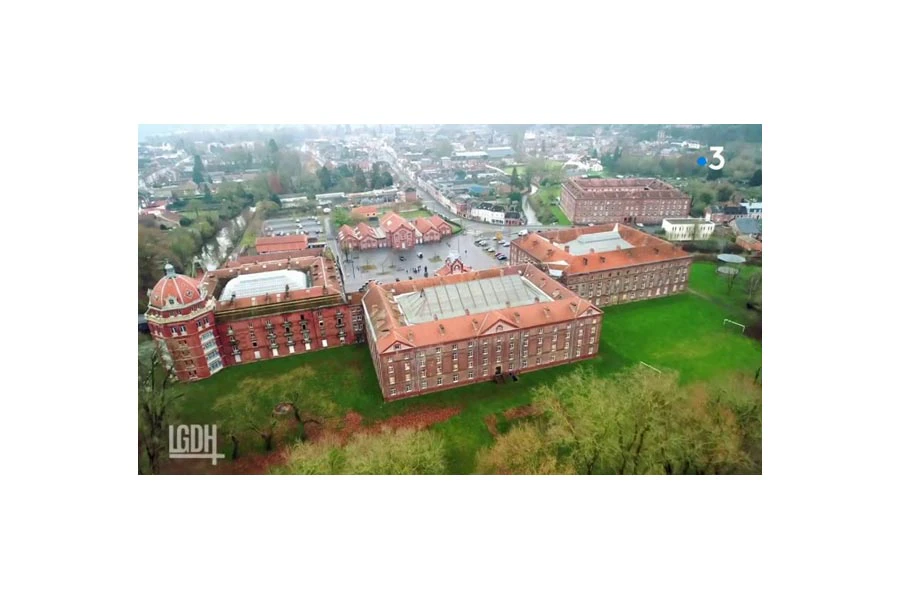
Design
Matali Crasset and Thomson
You must have already seen Matali Crasset's work, even without knowing her.
Her mind is always focused on several new projects, and she designed , among many other things, the new Parisian newspaper kiosks, a luminous connected speaker (OSMOZE.) for DesignerBox and the Thomson brand, and imagined a vase, a bookstore, a hotel, or her version of an itinerant and interactive merry-go-round for children with the appearance of a weeping willow: "Willow and the Hooppies" ...

An original hairstyle, to allow a “better circulation of ideas”
If Matali Crasset was a former collaborator of Philippe Starck, when he was the artistic director of Thomson between 1993 and 1997, she is above all an artist with international renown in the world of design, whom we may recognize easily thanks to…her "bowl haircut", which she enjoys: "People will laugh, but I find that this haircut allows a better circulation of ideas! "It allows me to think, there is good ventilation in the head, because design is first and foremost at 80% about thinking" - and her square glasses: "A way to express your personality with the idea of keeping your eyes wide open and having a permanent curiosity".It’s her way of making sense of everything, but always with a light spirit and irony.
Matali instead of Nathalie
While visiting a class, we discover that her first name is actually Nathalie with an N. But she chose to keep the wrong pronunciation of a child who called her Matali. And that suits her pretty well, because childhood can be found everywhere in her design projects.
“Make the Earth worthwhile living. "
She invented an itinerant and interactive merry-go-round for the Center Pompidou: “Willow and the Hooppies”. This little show encourages the families to be more concerned about the environment. The documentary brings us to follow step by step the designing and manufacturing of this carousel, commissioned by the Center Pompidou, in Paris, in which squirrels are beautifully made of metallic tubes.
This enchanted merry-go-round is also very ecological, since adults have to pedal for the children to turn around, and it is designed to make children aware of our connection to nature. Because, above all, the artist advocates living together through art: "I wanted to share, to offer things, to make the Earth more worthwhile living and to continue to imagine the world of tomorrow."


"The willow": "an open shelter".
Among other things, we learn the importance of a willow for Matali Crasset, whose origins are peasant and earthly, when she explains that, in her opinion, this type of tree may be positioned between the house and the hut, between open and closed environment.
Indeed, when she was a child, a willow stood on the farm of her family , with protective foliage, and opening onto the hills, which was decisive in inspiring her with the current creations of modular spaces intended for the public (cultural centers, libraries, ...), where we find the idea of a willow that offers an open shelter.
Jean-Baptiste Godin, one of the first designers
For Matali Crasset, one of the first designers was Jean-Baptiste Godin. This 19th century industrialist turned out to be a kind of generous designer of reality, because he thought of all aspects of the life of the inhabitants of the Familistère de Guise, which he founded.
For example, he designed even the cradles, so that a baby would no longer wake up his or her parents.
On a six-hectare site, this avant-garde entrepreneur built all the family accommodation for his workers, a swimming pool, a theater, a school, etc.


 Denmark (Danish)
Denmark (Danish)  Deutschland (Deutsch)
Deutschland (Deutsch)  España (Español)
España (Español)  France (Français)
France (Français)  Italia (Italiano)
Italia (Italiano)  Nederlands (Dutch)
Nederlands (Dutch)  Polska (Polski)
Polska (Polski)  Russia (Russian)
Russia (Russian)  Sweden (Swedish)
Sweden (Swedish)  Turkey (Turkish)
Turkey (Turkish)  Ukraine (English)
Ukraine (English)  United Kingdom (English)
United Kingdom (English)  USA (English)
USA (English)  China (Chinese)
China (Chinese)  Hong Kong (English)
Hong Kong (English)  India (English)
India (English)  Indonesia (English)
Indonesia (English)  Lebanon (English)
Lebanon (English)  Saudi Arabia (English)
Saudi Arabia (English)  Thailand (English)
Thailand (English)  Vietnam (English)
Vietnam (English)  Algeria (Français)
Algeria (Français)  Egypt (English)
Egypt (English)  Australia (English)
Australia (English)